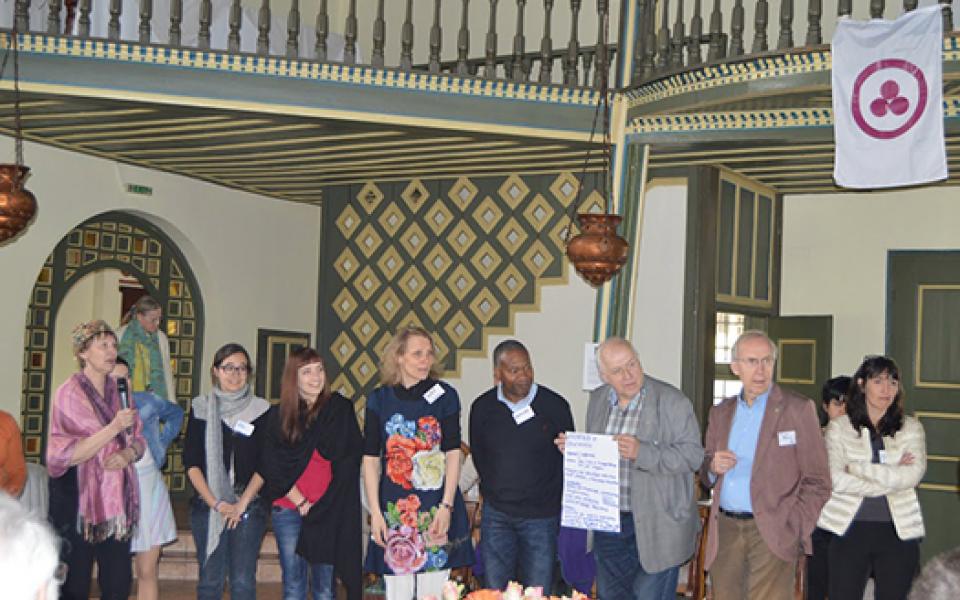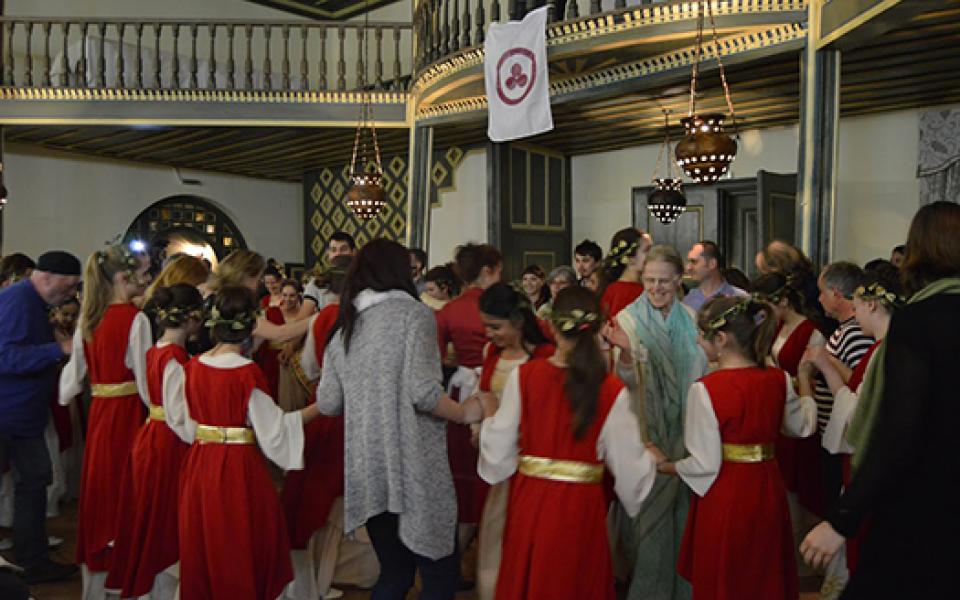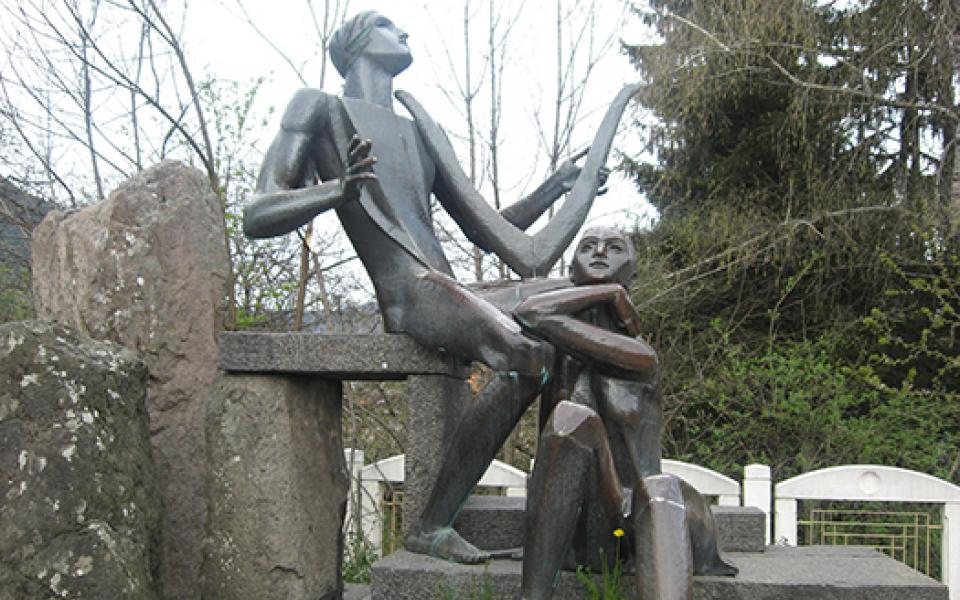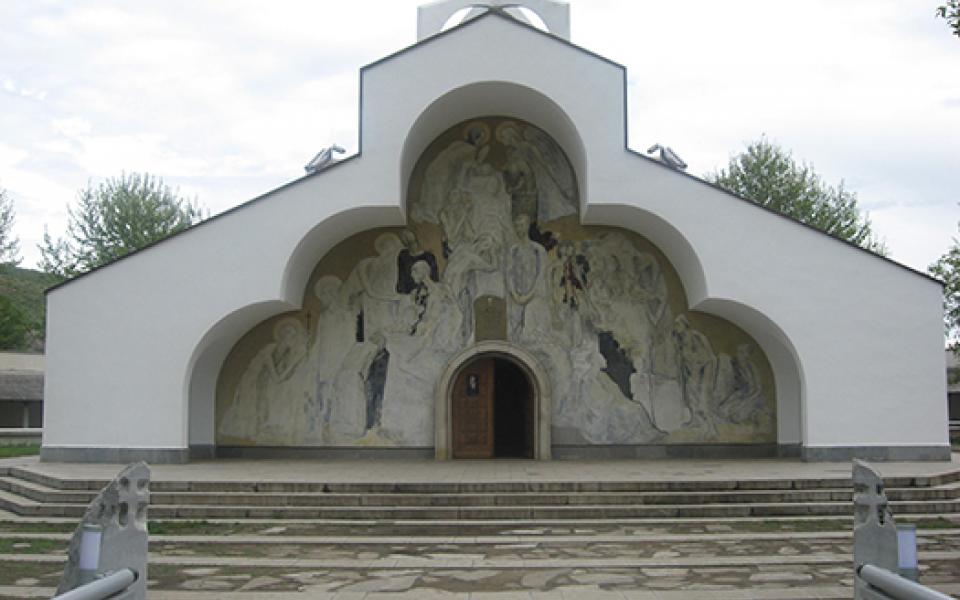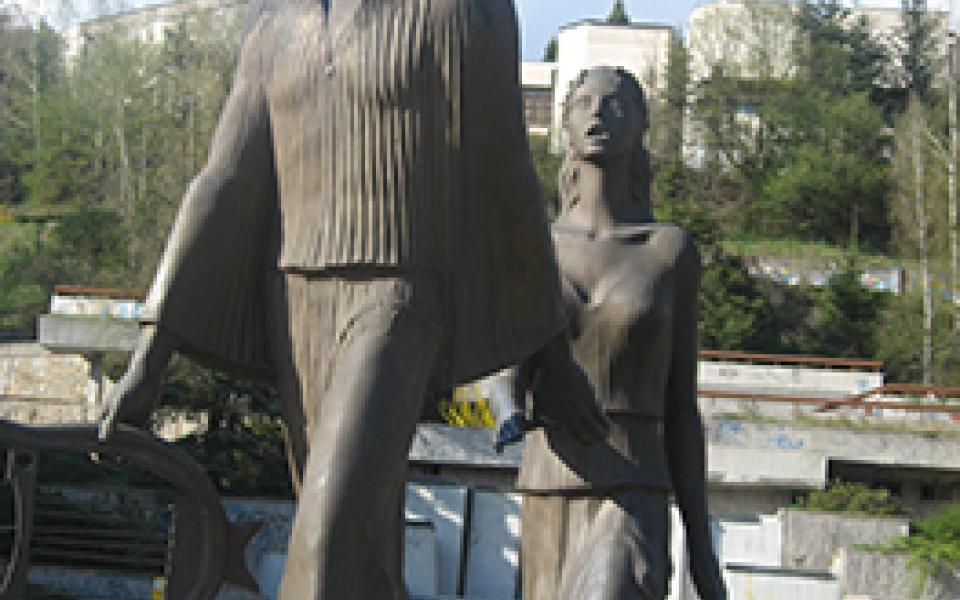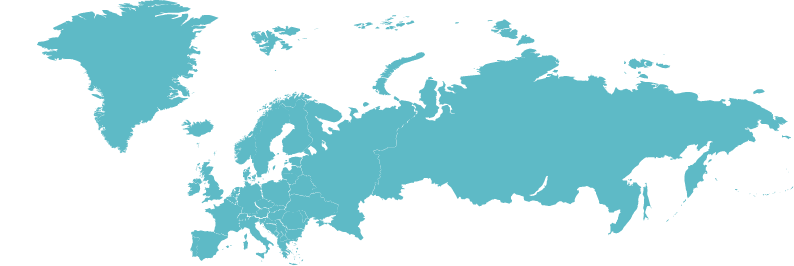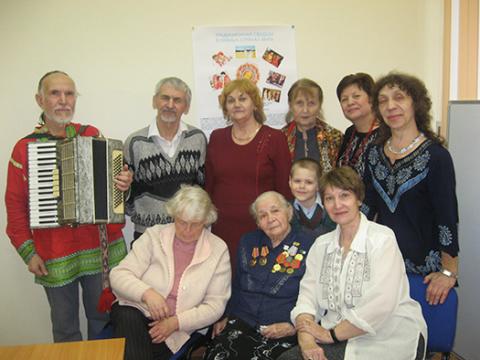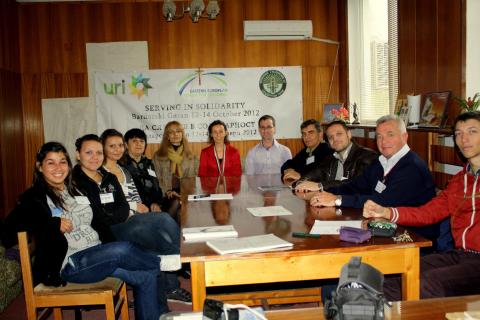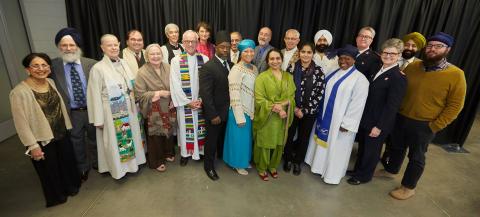When I got an invitation as a coordinator of URI CC “Euro-Asia” to participate in the URI Europe Conference “Moving Interfaith Work Forward in Europe” (April 23-26th 2015, in Plovdiv/Bulgaria), I felt that I should/must go there. Firstly, I was attracted by the organizers’ words: “In this event we want to give European CCs a chance to meet personally, in order to strengthen the URI Europe network and enhance the impact of our interfaith work for peace, justice and healing…. make concrete plans and commitments for the next steps forward.” Secondly, my previous trip to Bulgaria was 25 years ago and I was very much impressed by the nature, and great culture, of this land and good people I met then.
Well, my expectations were fulfilled and I came back home as an elephant loaded with good impressions, new ideas and plans. Many things have changed in the country—some to the better, while others to the worse— during a quarter of century. This is life…
The organizers of the conference (URI-Europe CC “BRIDGES” with Petar Gramatikov in a leading role) have done a great job to make dozens of big and small details of the conference a success. Before the conference, they gave us information about the city Plovdiv as the cultural capital of Bulgaria and one of the most multicultural cities in Bulgaria. It is one of the oldest cities in Europe, dating back to 4000 BC, so we had a chance to visit the ruins of an ancient Roman theater. A visit to the nearest mosque in Plovdiv, with meeting a local mufti, was very interesting for all of us too.
For me, the Plovdiv Conference was a good example of the new ways of conferencing, for it comprised Diversity in Oneness in all the activities, serious and pleasant at the same time, without long talks and mentoring. Sharing was the key principle of that gathering, and every participant had a chance to share and to be heard. I am very happy to have had a chance to hang the Banner of Peace, proclaimed by the great Russian/International peace-maker, writer, philosopher, and spiritual artist, Nikolai Roerich; so the whole conference was blessed by this great symbol of Oneness in CULTURE, SCIENCE and RELIGION.
Very impressive were morning Opening Ceremonies. It was so good that every activity was led by different persons, and we witnessed a good example of Leadership, when for this or that activity a different person became a Focus and the respected URI leaders became active participants, and even friends. In the future work of our CC we are going to use some examples of activities I participated in, including: Opening Ceremonies, The Journey We Have Travelled - Getting to Know Each Other (Appreciative Interviews), Weave Us Together, Open Space Sessions, etc.
Unforgettable are the cultural evenings with a group of talented Bulgarian young singers. The next cultural program we had was done by us, the conference participants. Meeting in working groups to exchange and plan future joint activity was one of the best results of the conference.
During the three days, we all were in the atmosphere of friendship, love, sharing and deeper cognizing the Interfaith world through communication with each other and participating in general activities. During that three days we didn’t live in the “Ivory Tower,” separated from the rest of the world. I didn’t have a chance to learn about Nepal disaster on that morning, April 25, but seeing the sad face of Kiran Bali, whom I met early morning, I realized that something had happened. Being safe in a spring Bulgaria we sent our prayers and thoughts of support to the Nepalese people.
Time flew fast… and soon some participants had to leave. We said “good bye” to them and they left one by one as instruments leaving the stage in the famous musical piece, to continue their wonderful life theme, devoted to service.
I had my own plans to visit some special spiritual places of Bulgaria afterwards and joined the rest of the group in the trip, organized by Petar, to Bachkovo Monastery, founded in the 11th century not far from the modern Plovdiv. The most impressive thing there, is that along with traditional icons and frescos, some pictures of the ancient philosophers are exposed there as well. Moreover, there are frescos with pictures of different religions and even of some people who were considered to be heretics.
The time came for me to say “good bye” to the friends and I took a bus bringing me to Smolyan, a town in the Rodopy mountains, to the land of Orpheus and Euridice. Many years ago Smolyan, situated in the mountains, impressed me so much. Although at that time I was aware only of the popular legend about Orpheus, I felt the strong and inspiring energy of the place, standing near the statue devoted to the great love of Orpheus and Euridice, spiritual and mundane at the same time. Later on from esoteric knowledge I came to know that Orpheus is one of the most mystical figures in the world culture; little evidence is known, but many legends had been created about his story, and every legend has some truth behind it. According to the opinion of Helena Blavatskaya, Orpheus was a Great Individual, standing in the line along with Egyptian Tot and Jewish Enokh, whose task was to bring knowledge and wisdom to people through playing his lyre. There was no limit to his power when he played and sang. No one and nothing could resist him. Everything animate and inanimate followed him. He moved the rocks on the hillside and turned the courses of the rivers....
I was brave enough to visit the so-called “Devil Throat”- a touristic place today, famous as a grand mountain cave where, according to the legend, Orpheus lost his beloved. You will never forget that place with waterfalls and a bottomless abyss. In Smolyan there are two nice monuments devoted to Love, depicting Orpheus and Euridice. In many places in the Rodopy mountains, one can see chapels of Paracletus, standing as symbols of the Holy Spirit for the coming epoch.
The next spiritual magnet for me was Rupite - a place where a great spiritual woman of the 20th century - a blind Bulgarian prophetess and clairvoyant named Vanga - lived and spent her last years, helping thousands of people with the problems of physical and spiritual bodies. She is very much loved and known in Russia. Two years before she passed away in 1996, a Church devoted to St. Petka was erected close to her modest house according to her own design and vision. She wanted this Church to be devoted to St. Petka and to the idea of Compassion. There is, may be, no other Christian Church of this kind in the world, and today not every person is able to comprehend its extraordinary form and the icons on the altar and on the church pediment part. As for me, I was aware of where I go to and what I would see there. Reality even exceeded my expectations. There are not many places left on the planet with such pure, strong but soft energies as here. Before coming here I experienced such feelings only in the sacred land of my beloved Altai in Siberia and in the Himalayas.
I wished I could spend more time in Rupite but had to leave after two wonderful days in the place of the former volcano with thermal hot springs, which Vanga had chosen herself. People come here for healing. Sofia was the last town of my trip before the flight home. Bulgaria is the land of natural thermal sources, whose healing waters I tried in Rupite and even in the center of the Bulgarian capital. My friend Todor met me and was a great guide in his hometown. He introduced me to his friends, who are actually doing the same spiritual, social and cultural work as we do, devoting their life to making a difference in their beloved, small Motherland (Bulgaria) and in the big Motherland (the planet Earth).
Back home I got a message from Todor with photos of the Victory Day Celebration on May 9 in Sofia. We all are different in many ways but we all live on one planet, and only with our joint efforts we are able to spread Peace.
- Galina Ermolina
